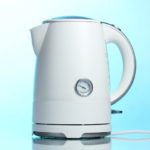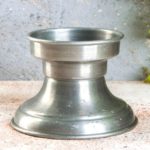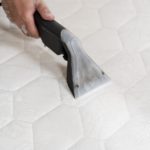When cleaning an electric kettle, a good place to start is to check your user manual for helpful tips. This is an essential step if you’ve got an expensive electric kettle that needs to be cleaned in a particular way, and cleaning such an item with a particular product could void any warranty you have.
You can split the cleaning up into two parts:
Cleaning the Inside of Your Kettle
Tip: Don’t use rough cleaning tools to clean stainless steel, glass and plastic kettles. Such items could cause irreparable damage to the kettle. Similarly, avoid using heavy-duty chemicals to clean stainless steel and plastic kettles.
The vinegar method
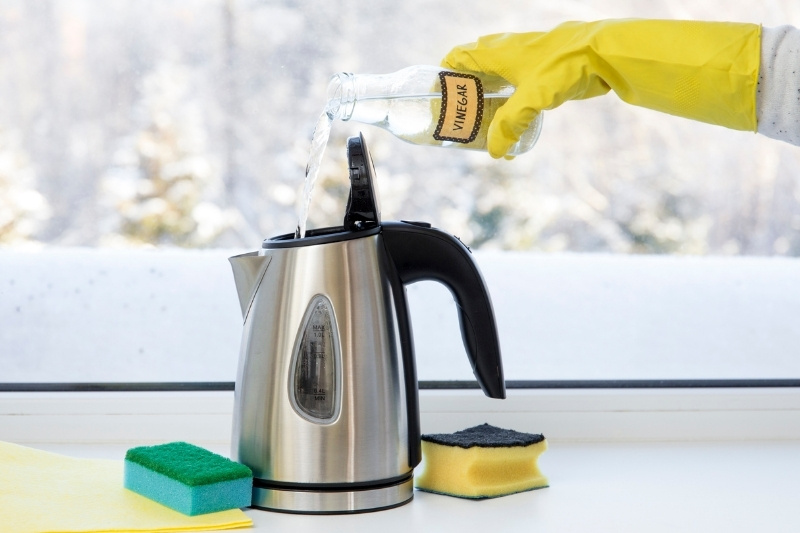
- Open some windows.
- Empty all the water out of the kettle.
- Remove any filters that are inside the kettle.
- Fill your kettle up to the quarter-way line with white vinegar.
- Fill the kettle up to the halfway line with water.
- There is no need to fill the kettle up all the way because this puts needless strain on the heating element.
- Press the switch, so the kettle starts boiling.
- Once the kettle has boiled, leave the hot water to sit inside the kettle for half an hour.
- Check the kettle and if it’s still dirty, leave it for another 20 minutes – during this time the vinegar will break down all the dirt inside the kettle.
- Switch the kettle off and unplug it at the mains.
- Empty the kettle.
- Make sure the kettle is cold before you put your hands anywhere near its interior.
- Grab a very soft toothbrush and start rubbing the inner walls of the kettle with the toothbrush – be very careful and gentle.
- Continue to do this until all the loose dirt has been collected/rubbed off.
- Go to the tap and rinse cold water through the kettle multiple times.
- Keep repeating this exercise until the kettle is completely clean – you don’t want the kettle to have a vinegar smell.
- Examine your kettle for dirt – repeat the steps above if you still see dirt. If not, dry and continue to use your kettle as normal.
Note: To clean a reusable filter let it soak in some warm water and white vinegar for a few minutes. Then start brushing the filter with a soft toothbrush to dislodge bits of dirt. Dry and replace the filter before using the kettle again.
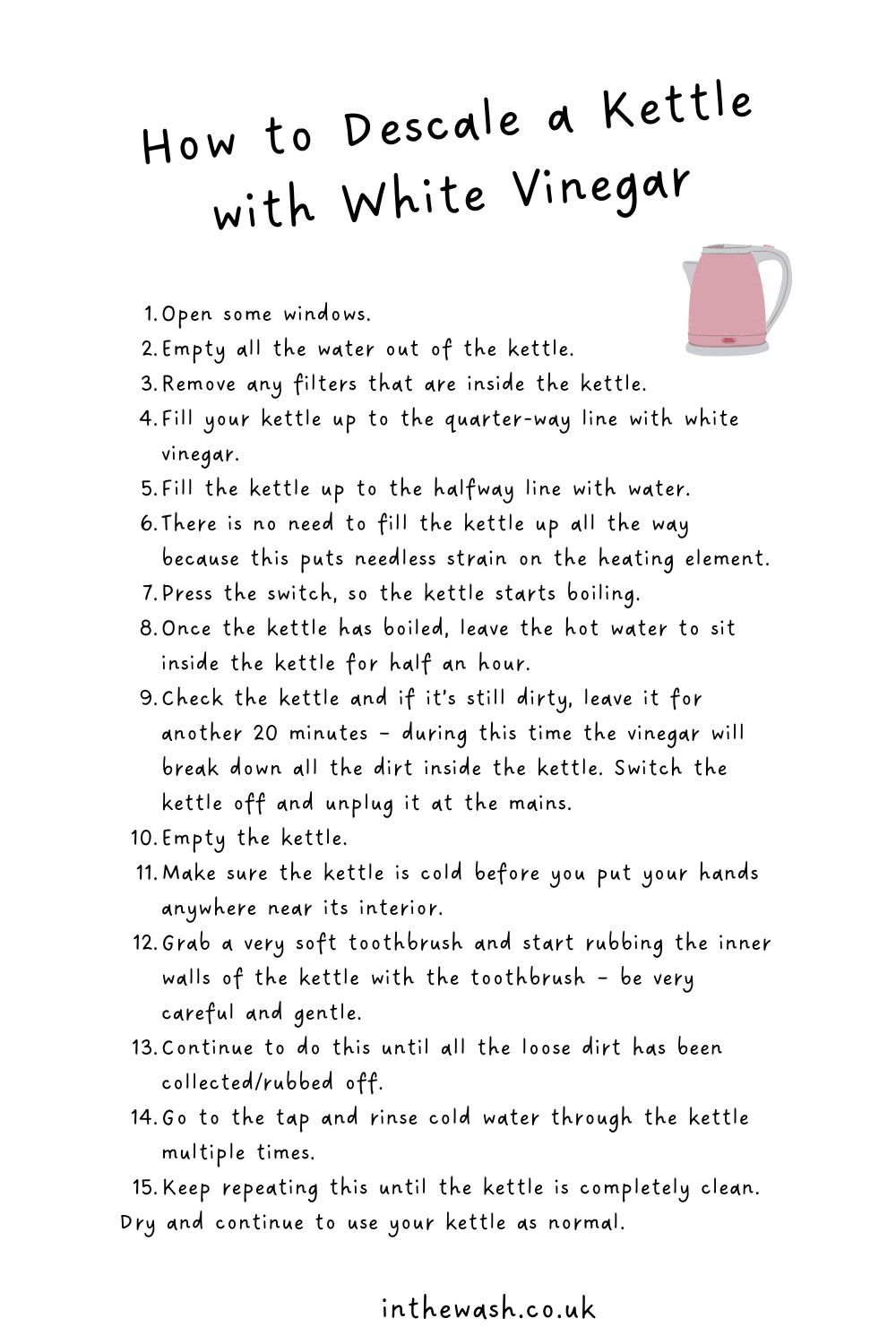
Using a specialised cleaning product
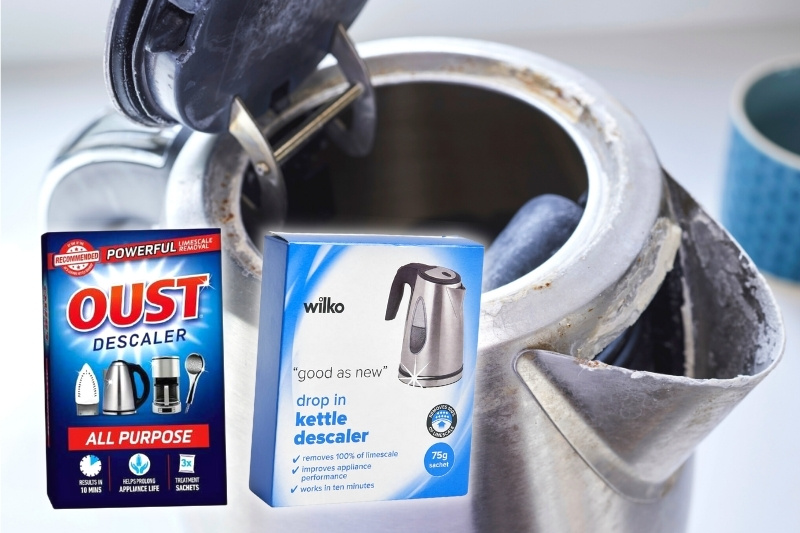
Alternatively, you could use a specialised, off-the-shelf cleaning product to clean your kettle. You can usually pick these items up in supermarkets, and in stores like Wilko, The Range and online.
Some products you can look into, include:
Oust All Purpose Descaler comes in sachet form and can be used to clean limescale and to prolong the lifespan of kettles, as well as, irons and coffee machines. It’s super easy to use this item and you can see great results in as little as 10 minutes.
Wilko Kettle Descaler is specifically designed to remove limescale from kettles. Like other descalers, it comes in sachet form and gets to work in as little as 10 minutes. All you need to do is boil the kettle, drop the contents of a sachet into the hot water and wait for the potion to work its magic!
Cleaning the Outside of Your Kettle
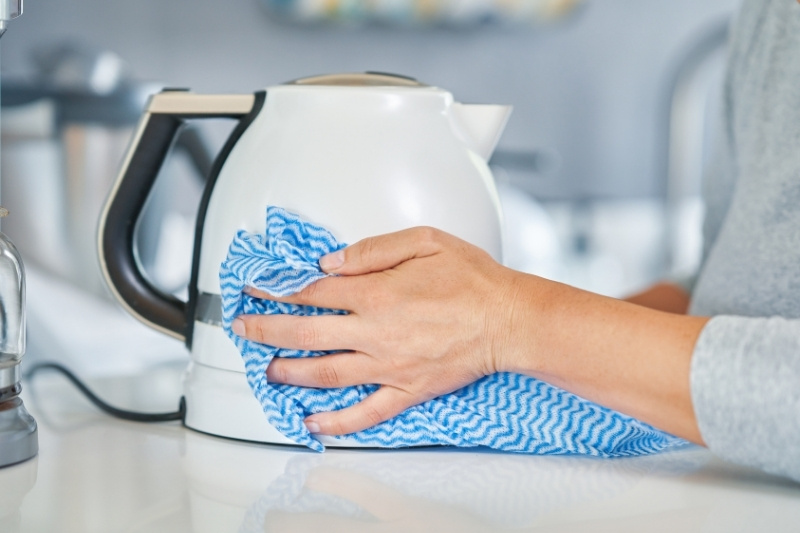
When the kettle is cold you can wipe it down with a damp, warm cloth. If you’ve got stains or greasy spots to remove, you can soak the cloth in some soapy water and use this to clean the exterior of the kettle.
Make sure you dry the kettle before you use it and remove any suds!
In addition to the above, you can also create a squirtable white vinegar solution to clean the outside of your kettle down. Simply mix one part white vinegar with three parts warm water in a spray bottle, then spray a small amount of the mixture onto a microfibre cloth and start rubbing the kettle.
You should not wash your kettle in the sink, or submerge it under water, as you would do with your other dishes!
Tip: When you’re cleaning your kettle you can also take a few minutes to inspect the appliance for any damages. For example, you can check the handle to see if it’s coming loose (you can then fix this issue), or you can replace any worn parts, if possible.
How to Remove Limescale Build-Up
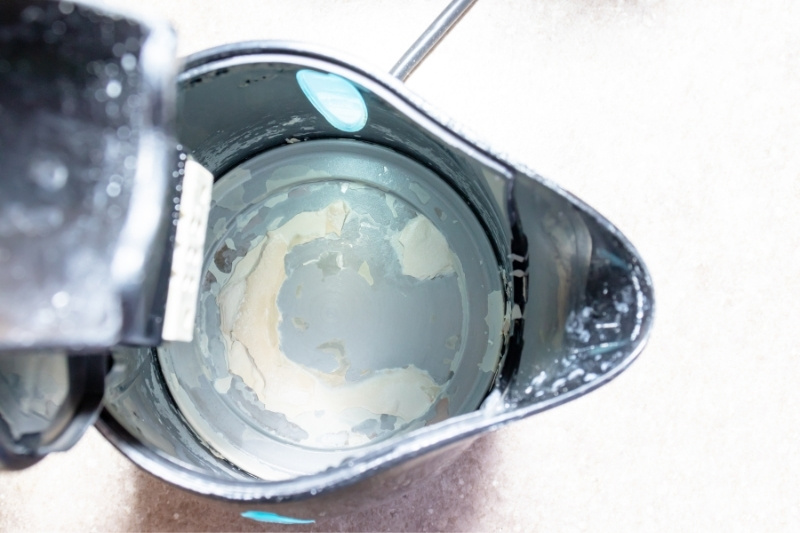
If you frequently clean your kettle, limescale should not be a major problem for you. So, you can use the vinegar cleaning method above to remove the build-up from your kettle.
If you’ve got some stubborn limescale to deal with, follow the vinegar method above but add a teaspoon of bicarbonate of soda to the water. Just remember to clean the kettle out thoroughly before you use it again.
If none of the above methods works for you, you can buy a specialised kettle descaler, like the ones listed above, or you can try a more eco-friendly product like the one listed below.
Ecozone’s Kettle and Iron Descaler is a vegan-friendly and cruelty-free descaling product that can be used in both kettles and irons. A standard pack comes with three sachets and you only need to use one powder sachet at a time.
To use this descaler all you need to do is boil the kettle, add the contents of the sachet into the kettle, wait half an hour and empty and rinse the kettle. You should see significant results in mere minutes!
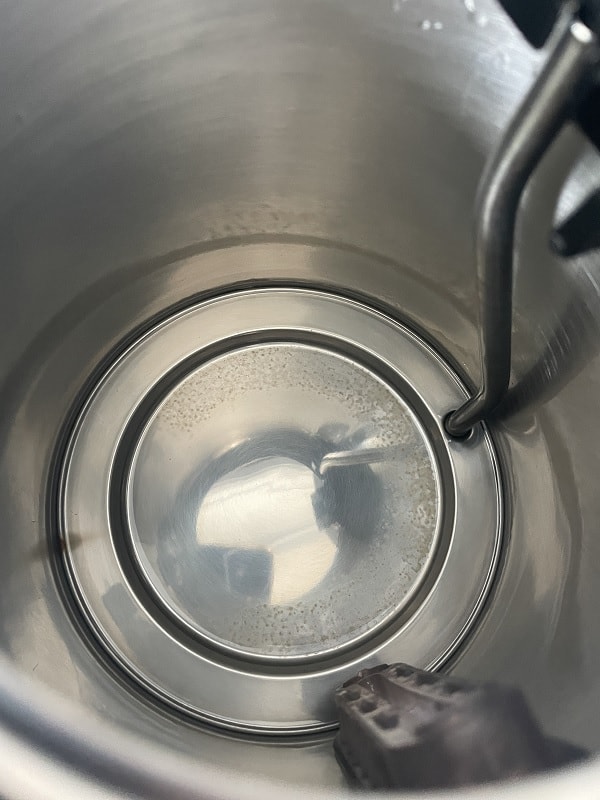
Where Does Limescale Build Up in a Kettle?
Limescale typically affects the interior walls, base, filters and spout of a kettle. However, you don’t often see limescale on the walls of plastic kettles because it’s mainly attracted to metal work.
How Do You Keep Limescale Out of a Kettle?
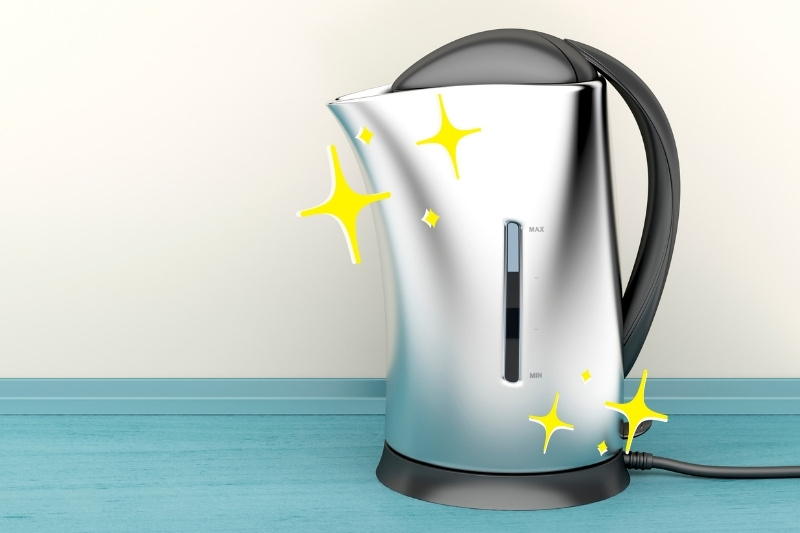
Limescale will never go away completely, but there are ways of keeping this pesky guest at bay. Try the following:
- Only boil as much water as you need, so you don’t leave unused water to rest in the kettle for long periods of time.
- Empty the kettle out when you no longer need to use it.
- Use limescale filters, if you can.
- Clean your kettle often.

Bethan has a passion for exploring, reading, cooking and gardening! When she’s not creating culinary delights for her family, she’s concocting potions to keep her house clean!

